
TUTORIALS
Tutorial 1: Monday 09:00-12:30 - Room Beckett 1
Analyzing and Correcting Network Performance Problems with perfSONAR
Jason Zurawski, Jeff Boote, Eric Boyd, and Matt Zekauskas, Internet 2, USA
Abstract
Network capacity and complexity continue to increase. Investment in Research and Educational (R&E) networking has grown considerably due to programs such as the National Telecommunications and Information Administration‚s (NTIA) Broadband Technology Opportunities Program (BTOP). Advancements in network infrastructure have a dual effect. The added investment will facilitate scientific and arts based research, giving access to countless end users and enabling collaboration. Conversely, upgrades and additions to existing infrastructure will introduce flaws through the mixture of heterogeneous equipment, default configurations, and domain specific management.
To make the most of this new investment, network infrastructure should be instrumented and monitored to allow minimal cost of management and to maximize the cost effectiveness. All networks should adopt network performance tools and methodologies to implement this proposed instrumentation. These tools should address all aspects of network performance, including, but not limited to:
-
Identification and collection of several core performance measurements:
-
Latency (Round-Trip and One-Way),
-
Bandwidth (Available, Achievable, etc.),
-
Network Interface Discards, Errors, and
-
Utilization
-
Regular performance monitoring and alarming on the key metrics
-
Use of tools in a methodical, diagnostic fashion to debug problems as they occur
The author of this tutorial will educate attendees on network performance measurement methodologies and tools that have been developed and used by several large R&E networks (ESnet, GÉANT, Internet2, and RNP) to ensure optimal network performance.
Bio
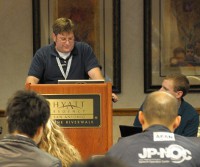
Jason Zurawski received his M.Sc. in Computer and Information Science from the University of Delaware in 2007 and his B.S. in Computer Science and Engineering from The Pennsylvania State University in 2002. Zurawski is currently a Network Software Engineer and Research Liaison for Internet2, and resides in Washington DC, USA. As a founding member of the perfSONAR project, Zurawski has been instrumental in the design and development of network measurement and monitoring software. Additionally, Zurawski oversees the deployment and adoption of best practices for networks and scientific communities.
Tutorial 3: Friday 09:00-12:30 - Room Beckett 1
Provisioning and management of Enterprise Services in a Cloud
Ajay Mohindra, Sambit Sahu, IBM Thomas J. Watson Research Center, USA.
Kunwadee Sripanidkulchai, NECTEC, Thailand
Abstract
This tutorial will provide an in-depth understanding of - what it takes - to provision and manage enterprise applications and services in a Cloud - covering both hands-on technology as well as recent research advancements in these areas. While there are lot of materials available in bits and pieces, there is currently no easy to understand and structured documentation for even the basic building blocks required in a Cloud infrastructure. This tutorial is intended to introduce the audience the state of the art technologies and research for various aspects of an Infrastructure as a Service (IaaS) Cloud platform.
Starting with an overview of current hypervisor and cloud provisioning technologies, various approaches for automated provisioning of single as well as composite virtual appliances will be described. The know-hows for building virtual appliances, managing virtual images will be covered. Several example services will be described for demonstrating the technologies and challenges involved in provisioning the enterprise grade applications in a cloud. Next, the tutorial presenters will cover monitoring and management of services in a cloud to facilitate IT optimization and management simplifications leveraging underlying virtualization based capabilities such as resource elasticity, live virtual machine migration. Various key research challenges and results will be covered related to migration of enterprise applications to the cloud.
Bios
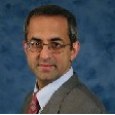
Ajay Mohindra has been a research staff member at IBM since 1993 and a research staff manager since 2005. For his technical contributions to IBM, he has been received one Outstanding Innovation Achievement Award, one Outstanding Technical Achievement Award, two Research Division Awards, and one Technical Group Award. He also holds 16 patents. He holds a Ph.D. in computer science from the Georgia Institute of Technology. His research interests include distributed systems management and cloud computing. Dr. Mohindra’s research has been the foundation for the cloud provisioning solution for IBM Cloud offerings. At IBM, he has worked on the design of the provisioning system for the Research Compute Cloud. The Research Compute Cloud currently supports the compute needs for the IBM Research population. The provisioning system includes the automation workflows, activation engine, and post provisioning processes. In addition to the basic cloud infrastructure services, he is also working on the design for cloud-enablement of several industry solutions such as demand driven business analytics, video surveillance, and food traceability solutions.
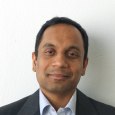
Sambit Sahu has been a research staff member at IBM since 2000. Dr. Sahu received his Ph.D. degree in Computer Science from University of Massachusetts at Amherst. After joining IBM Research, Dr. Sahu has focused on systems and network services management, content distribution network and data center networking and more recently on cloud computing and smarter planet solutions. He has more than 50 technical papers and 60 patents filed in these areas. He is the founding chair of Usenix/ACM HotClpoud workshop which has been well received in the Cloud/Systems community. Dr. Sahu has a best paper award at ACM Internet Measurement Conference 2006. Dr. Sahu’s recent research has been on designing cloud platform and solutions for deploying smarter city services at city-wide scale. He is a master inventor at IBM Research and has Outstanding Achievement Award and Research Division Awards for his pioneering work in these areas.

Kunwadee (Kay) Sripanidkulchai is a senior researcher at the National Electronics and Computer Technology Center (NECTEC) in Thailand.Her research interests are in services delivery, cloud computing, and networking. In her previous role, she was a Research Staff Member at the IBM T.J. Watson Research Center exploring the technical and business challenges of migration into clouds and virtualized environments, and enabling live migration across data centers. Kay led a team of IT architects in IBM Global Technology Services to develop new processes and tools for a new virtualization service offering for IBM. She has co-authored a number of papers and patents in networking and cloud computing, and has taught at several universities including Columbia University, Mahidol University, Khonkaen University and Thammasat University. She was awarded a Ph.D. from the Department of Computer and Electrical Engineering at Carnegie Mellon University in 2005 where she was advised by Hui Zhang and Bruce Maggs.
Tutorial 4: Friday 13:30-17:00 - Room Beckett 1
Management of Smart Grids: Technologies and Challenges
Dr. Wouter Haerick (IBBT - University of Ghent)
MSc. Matthias Strobbe (IBBT - University of Ghent)
Abstract
Currently, there is a global consensus to increase energy efficiency, stimulate usage of renewable energy sources, and reduce CO2 emissions. The Smart Grid consists in overlaying the power delivery system with an ICT layer that allows a utility provider and its consumers to constantly monitor and adjust electricity use. Efficient management of such Smart Grids is considered an important research topic for the next years in both academia and industry.
In this tutorial the following aspects will be covered: drivers for Smart Grids, overview of the industrial actors, outline of required underlying ICT architectures, monitoring and management technologies for smart energy grids and identifying the important topics and approaches for further research in this area.
In addition, first results from sociotechnical studies will be presented to provide insight in the user interactions and behavioral response to the envisaged systems, together with some results from business modeling studies to propose the market models enabled/driven by smart energy ICT. In the last part of the tutorial we will present an overview of ongoing standardization efforts and research projects, each with their specific focus.
Bios
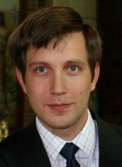
Wouter Haerick received his Masters degree in Electro-technical Engineering from the Ghent University, Belgium, in June 2001. After graduating, he started working in the telecommunication market and participated in various delivery projects at fixed and mobile operators. In 2004 he joined IBCN as a research assistant and has been involved in various European and national research project such as IST-FP6 MediaNet, FadeHome and QMatch. In 2009, Wouter Haerick obtained a PhD in the field of Computer Science. Wouter Haerick also holds an MBA from the Vlerick Leuven Gent Management school, and is co-founder of two ICT-enabled companies. Currently, WouterHaerick is coordinating the smart grid related research projects. His main research interests are software architectures for deployment of home (energy) services, policy management and wireless QoS.

Matthias Strobbe received his M. Sc. degree in Computer Science Engineering from Ghent University, Belgium, in July 2004. He is now a research engineer and Ph.D student affiliated with the Department of Information Technology of Ghent University. His main research interests include smart power grid algorithms and software architectures for support of context awareness and location based services. He is currently finishing his Ph.D. after which he will work as postdoctoral researcher focusing on smart energy grids.
**WITHDRAWN** Tutorial 2 : Monday 13:30-17:00 - Room Beckett 1 **WITHDRAWN**
Interconnecting Service Oriented Domains: Managing Flexible Service Environments for Bi-Directional Service Integration
Thomas Magedanz, Technical University of Berlin, Germany
Lajos Lange, Fraunhofer Institute FOKUS, Germany
Abstract
This tutorial will provide an overview about the emerging service managing standards as defined in the Open Mobile Alliance (OMA) and TeleManagement Forum (TMF). In this regard we will address in depth the enabling State-of-the-Art, Web-based Information & Communication Technology (ICT) standards, including the Open Service Gateway initiative (OSGi), Service Component Architecture (SCA) and various service composition technologies. In addition, we will introduce the mechanism for bi-directional service integration. This refers to the two approaches "inside-out" based on the internal software export of services (SaaS) and "outside-in" for the external import of Web Services like SOAP, REST, RSS, etc.
The tutorial will also provide an introduction to the designed Service Broker by the authors. This platform is intended for service providers and is part of the Open SOA Telco Playground (www.opensoaplayground.org/Broker). It provides third party developers with a rapid development process by sharing and composing software building blocks efficiently. A proposed service life-cycle management process enables an easy deployment and dynamic service exposure. The integrated policy engine based on open standards assures a controlled access on services and enables a policy based service manipulation, delegation and selection function.
The Service Broker is based on the OMA Service Environment is using the IP Multimedia Subsystem (IMS) ˆ NGN technology while presenting seamless Web/Telco convergence by blending the typical Telco services with Internet services.
Bios
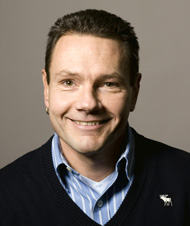
Thomas Magedanz (PhD) is full professor in the electrical engineering and computer sciences faculty at the Technische Universität Berlin, Germany, leading the chair for next generation networks (www.av.tu-berlin.de). In addition, he is director of the “next generation network infrastructure” division of the Fraunhofer Institute FOKUS (www.fokus.fraunhofer.de/go/ngni).In 2006, Prof Magedanz has been assigned as Extraordinary Professor at the Department of Electrical Engineering of the University of Cape Town, South Africa (www.ee.uct.ac.za). Since more than 20 years Prof. Magedanz is working in the convergence field of fixed and mobile telecommunications, the internet and information technologies, which resulted in many international R&D projects centred around Next Generation Service Delivery Platforms prototyped in a set of globally recognised open technology testbeds provided to the international academia and industry. In 2007 Prof. Magedanz joined the European FIRE (Future Internet Research and Experimentation) Expert Group.
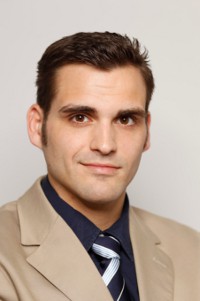
Lajos Lange received his Diploma degree as an Engineer for Multimedia Engineering at the University of Wismar, Germany. During his studies he specialized his skills in the areas of communication and network technologies. In cooperation with the Telekom Laboratories in Berlin, he invented the resource saving protocol TinySIP in regard to a Wireless Sensor Network environment. Since August 2007 he is a researcher at the Fraunhofer Institute FOKUS in the competence center NGNI. He is working on his PhD in the fields of NGN-IMS, Internet technologies and Services Oriented Architectures. In more detail, in the provisioning, composition, evolution of services as well as in the abstraction of services in open API’s.
